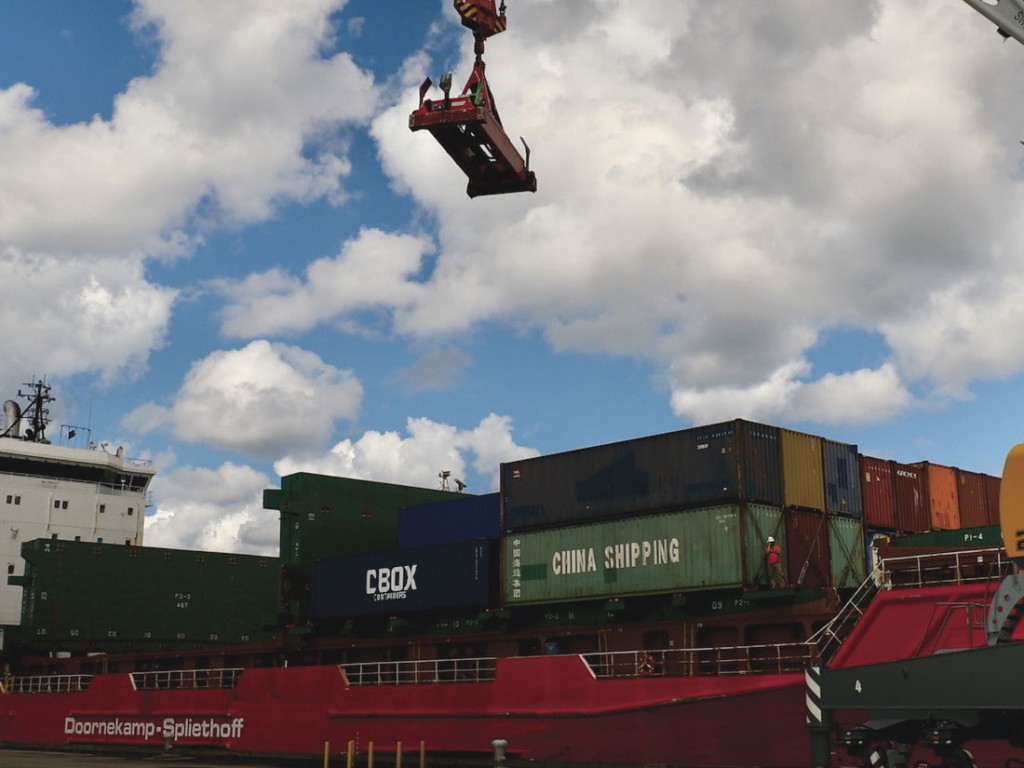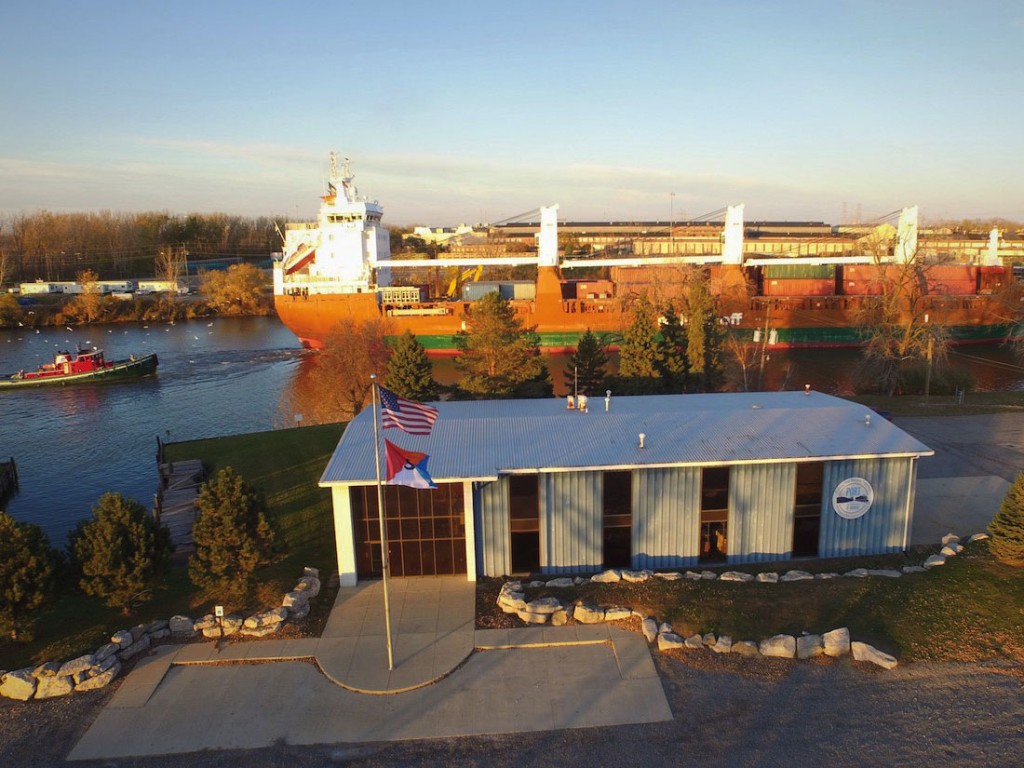Breakbulk ports in Great Lakes add new dimension to supply chain solution.
It’s not a flood, but there are tailwinds driving initiatives to recapture some of the container business lost by Great Lakes ports in the early 1980s when Manchester Liners and other carriers dropped their services linking Europe to the industrial heartland of North America. Such initiatives have coincided with COVID-related and overall supply chain problems that have seen, in the past few years, ocean vessels stacked up at congested ports on both the east and west coasts.
Pressure Relief
How rapidly and solidly the trend progresses remains to be seen. Nonetheless, top executives of leading US and Canadian Great Lakes ports are maintaining an upbeat, move-ahead attitude, despite the handicap of the nine-month shipping season and the competitive might of the continental railways.
“The Great Lakes-St. Lawrence Seaway System represents a pressure relief valve for North American freight movement that should transcend this pandemic bubble,” recently affirmed Deb Deluca, port director at the Duluth Seaway Port Authority. “It’s a great alternative for shippers looking to reach the Upper Midwest directly.”
Ian Hamilton, president and CEO of the Hamilton Oshawa Port Authority (HOPA), sees real opportunities for shortsea services that convert more cargo – including containerized cargo – to the marine mode.
“There is an appetite,” he argues, “to consider new solutions and demand in the market for more sustainable, efficient and competitive options to container movements.”
Highway congestion, driver shortages and escalating fuel costs are all part of a changing landscape of mounting supply chain issues, industry observers note.
Last June, a partnership between HOPA, Hamilton Container Terminal (HCT), Groupe Desgagnés, Federal Marine Terminals, The St. Lawrence Seaway Management Corporation, MSC and the Port of Montreal completed a pilot shipment for a fledgling container service. The MV Sedna Desgagnés carried 282 containers from Hamilton to Montreal with mostly scrap steel on the first voyage of a planned feeder service for transloading to overseas vessels.
“We’re hoping to do two additional pilots this year, and then roll out a fulltime service in 2023,” says Hamilton. The original plan is to build things up to 20-plus sailings annually.
While the above container shipping operation demonstrated its potential, the Canadian port chief executive acknowledges it also revealed “the challenges we’re faced with for this type of service. Our focus was a direct line from Hamilton to Montreal, but there are other alternatives available. Cooperation between ports can work well.”
For his part, Amandeep Kaloti, president of HCT, comments: “A Great Lakes container service has been a goal for our organization since we set up shop in Hamilton five years ago. We have been creating the business ecosystem to bring this service to life and established the right partnerships for it to succeed.”
HCT’s facility is reportedly attracting business through its Flexi-bag lined containers capable of transporting Ontario wines, petroleum by-products and other types of liquid cargo.

Spliethoff-Port of Cleveland Partnership
What has, in the meantime, seemingly worked well for the partners concerned has been the partnership since 2014 between Amsterdam-based Spliethoff and the Port of Cleveland in the Cleveland-Europe Express (CEE) service.
A sign of success: the Port of Cleveland doubled its container volume in 2021. The long-term goal is to handle between 50,000 and 75,000 containers annually, versus current throughput of about 15,000 TEUs.
The CEE, which transports a combination of bulk, breakbulk, project cargo and containers, started with one multi-purpose vessel moving between Cleveland and Antwerp. The liner service now utilizes multiple vessels, and last September, Spliethoff added a container-only vessel, the Peyton Lynn C. Chartered from Doornekamp Shipping Services of Odessa, ON, it has the capacity to handle over 600 TEUs.
“Due to the various issues throughout the global supply chain, cargo owners and logistics providers continue to search for alternatives to their traditional routings,” explains Dave Gutheil, chief commercial officer for the Port of Cleveland. “Because of these challenges, the Port expects that our container volumes will continue to grow, and we will continue to make the necessary investments that will entice more cargo to our port.”
Sten Konst, head of Spliethoff’s Great Lakes department, oversees the bi-weekly CEE sailings to Cleveland, Valleyfield, Quebec, and various ports on the Great Lakes. With the addition of the Peyton Lynn C., he says “we are proud to be the first and only dedicated container service to the Great Lakes.”
The vessel, he continues, further improves capacity, transit times and frequency.
Interviewed on the present outlook, Konst commented: “Especially now with all the logistical challenges in the current pandemic, supply chain reliability is more important than ever. Shippers are discovering the advantages of a direct service into the economic heartland of America, circumventing the congestion of the US East Coast.”
“Although some of the current supply chain problems may be temporary,” he adds, “we believe that the current situation will have a lasting effect on the Great Lakes, as some shippers that may have been hesitant to make use of the Seaway system in the past are now making the shift and are experiencing the advantages of our service.”
On the container front, things have been hopping at the Port of Duluth-Superior following a milestone decision last October – the regulatory approval awarded to Duluth Cargo Connect to accept at Clure Public Marine Terminal international shipping containers transported by waterborne vessel. Created in 2017, Duluth Cargo Connect was previously just a land-based road and rail container operation.
“Our new Sea Cargo Facility status opens the door for greater container volume and cargo diversity, which will complement our existing land-based container operation,” says Jonathan Lamb, president of Duluth Cargo Connect. He says that the direct maritime connection over the docks “will give our customers even more opportunity and flexibility in their supply chains.”

Big Project Moving at Port of Monroe
In recent years, the Port of Monroe had been restricted by the Detroit field office of Customs and Border Protection (CBP) from accepting international breakbulk cargo and marine containers unless it invested in screening technology and infrastructure upgrades. But last year, the Lake Erie port received federal funding to increase its security and scanning equipment.
“The Port of Monroe expects to open the State’s first marine container terminal known as Michigan’s Maritime Gateway midway through the 2023 shipping season,” Port Director Paul Lamarre lll told AJOT. “With the support of USCBP, the port will employ non-intrusive technologies (radiation portal monitoring and x-ray) to scan 100% of inbound containers and operate in complete compliance with the SAFE Port Act.”
The project has received $770,983 for a radiation portal monitor through a USCG Port Security Grant program as well as $3.4 million from the communities it will serve (City of Monroe and Monroe County).
Lamarre said the Port is not presently trying to forecast throughputs but rather is working with its partner, Spliethoff, to be as prepared as possible to serve the regional automotive and manufacturing industries. “The Port hopes to become a link in a larger chain of containerized freight movement on the Lakes and wishes to complement Spliethoff’s existing Cleveland-Europe Express.”
“When discussing containers on the Great Lakes,” Lamarre underlined, “it is important to remain realistic and acknowledge that container cargo will serve niche markets and be based on value to regional partners versus volume over the dock. What would be seen as a small amount of containerized cargo at many coastal ports, can be seen as a major development towards diversification and sustainability in America’s industrial heartland.”





